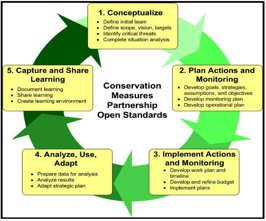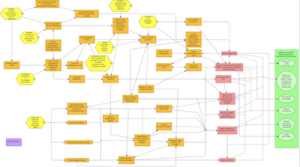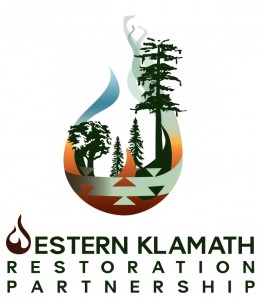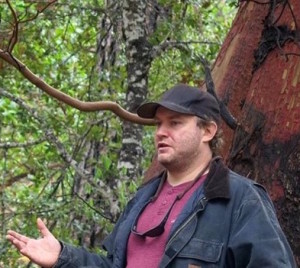This post originally appeared on the Fire Adapted Communities Learning Network’s blog in May 2016. We are reposting it with the permission of both the Fire Adapted Communities Learning Network and author Bill Tripp.
 The Western Klamath Restoration Partnership (WKRP) effort explores a path toward collaborative fire management in the Western Klamath landscape. It arose from a desire by the Karuk Tribe, the Mid Klamath Watershed Council, the US Forest Service, area Fire Safe Councils, environmental groups and other community-based stakeholders to explore what fire management could be like using a collaborative paradigm.
The Western Klamath Restoration Partnership (WKRP) effort explores a path toward collaborative fire management in the Western Klamath landscape. It arose from a desire by the Karuk Tribe, the Mid Klamath Watershed Council, the US Forest Service, area Fire Safe Councils, environmental groups and other community-based stakeholders to explore what fire management could be like using a collaborative paradigm.
Part of the collaborative process has been to use the Open Standards for the Practice of Conservation. This post is designed to share some of what the WKRP has learned in using the Open Standards process.
Get notified when new articles are posted to the EDR blog – sign up for our email list »
Identifying Values and Threats
Among the first steps in the Open Standards is understanding values and threats. What at first seemed simple turned out to be a challenging endeavor. We used a reiterative World Café process involving multiple small group brainstorming and whole group validation/wordsmithing sessions in order to hone in on our values and targets. Then we matched those with their associated direct threats.
 In completing this process during the course of several three-day meetings (that also included field trips), we tracked our threats back to the root cause. It is important to get to the root cause in order to affect real change. In the figures below you can see how our group traced the connections between our threats and opportunities, and identified root causes. You can see the entire situational analysis here.
In completing this process during the course of several three-day meetings (that also included field trips), we tracked our threats back to the root cause. It is important to get to the root cause in order to affect real change. In the figures below you can see how our group traced the connections between our threats and opportunities, and identified root causes. You can see the entire situational analysis here.
Inserting Strategies
Once we had identified the root cause, it was time to develop strategies that would turn threats into actionable pathways. Though it is recommended to try to keep the number of strategies to a minimum, our partnership ended up with nine of them.
Following the Pathway
The next step for WKRP was to connect our strategies and actions in order to manage our threats. For example, starting at the “develop inclusive partnerships for implementing zones of agreement” strategy, we established “improved intergovernmental and community coordination/communication” through development of an Interagency agreement that enabled the Karuk Tribe to pass through funds to the relevant WKRP partners. This helped to engage partners in the interest of overcoming the “lack of agreement on how to manage” and address “conflicting social values” threats.
Strategy Integration
 One of the strategies we are currently focusing on is “creating sustainable, diverse revenue streams.” This will help us “refine and implement existing fisheries restoration plans” and “increase local restoration capacity.”
One of the strategies we are currently focusing on is “creating sustainable, diverse revenue streams.” This will help us “refine and implement existing fisheries restoration plans” and “increase local restoration capacity.”
WKRP organizations have managed to leverage many resources, but the question remains: how do we build sustainable revenue streams? No doubt revenue from restoration byproducts will be a part of the equation. We don’t have the population base required to mimic the Santa Fe Water Fund or the Ashland Forest Resiliency Project. As an alternative, there has been a recent effort to establish The Endowment for Eco-Cultural Revitalization in an attempt to generate sustainable support for this intergenerational approach to establishing and maintaining resilient ecosystems, communities, and economies.
Lessons Learned
- Using a tested process like the Open Standards has helped our partnership create rigorous and strategic pathways forward.
- When working on situational analysis, you need to dig deep to get at root causes.
- Integrating strategies that help address multiple threats, or that support multiple values, is a good investment.
- Flipping threats to opportunities helps to frame outcome oriented results.
- Community support and capacity must be built and maintained for long-term progress.
 Bill Tripp is the Deputy Director of Eco-Cultural Revitalization, Karuk Tribe, Department of Natural Resources.
Bill Tripp is the Deputy Director of Eco-Cultural Revitalization, Karuk Tribe, Department of Natural Resources.
